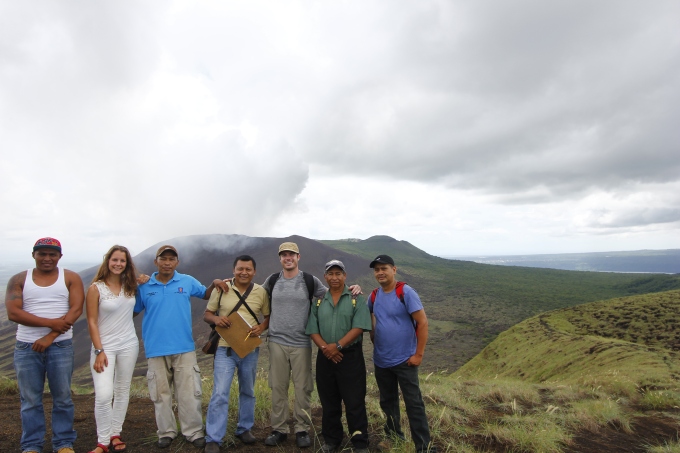
By horse or by foot – views of the live crater of the Masaya Volcano and, in the distance, the crater lake , Laguna de Masaya. L to R – Ariel, who leads the horses; Linda, group member; Franklin, local guide; Marlin, program coordinator; Nick, group member and photographer; Ismael, program coordinator and Bismark, local guide.
SUSTAINABLE ADVENTURE WITH THE COMMUNITIES OF THE MASAYA VOLCANO
La Mariposa has worked for several years with our neighboring indigenous communities – primarily the barrios of Panamá, Aguirre and Venecia – now we can offer a two week sustainable tourism program of exceptional diversity, based in these communities and the surrounding landscapes. Our program has such variety and depth thanks to our longstanding relationships with the communities, our focus on assisting their self-development and our commitment to protecting the environment.
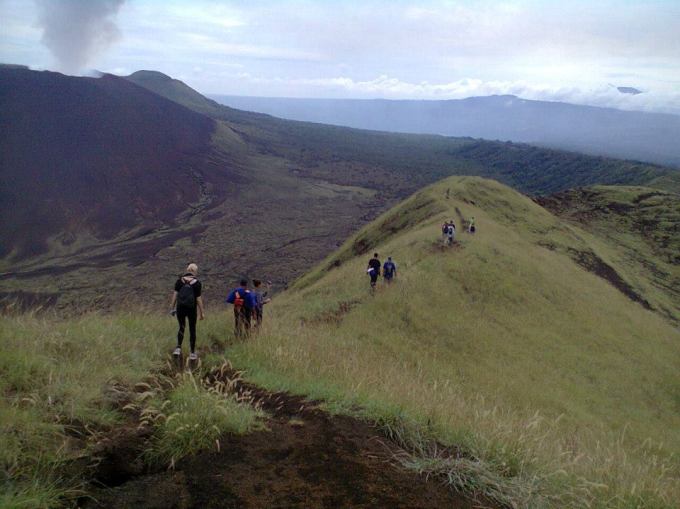
Trekking the rim of the Masaya volcano and visting indigenous communities along the way
Our guides and homestays are from the local communities. We are not experts in any one specialty but can tell you a great deal about the area – from its history, geography, myths and legends to the flora and fauna. We introduce you to different farming practices, organic and non-organic and products as varied as pineapple and coffee. We can show you traditional medicinal plants and healing practices. We focus on the efforts of the communities to combat the impact of climate change, especially since the serious drought in 2014.
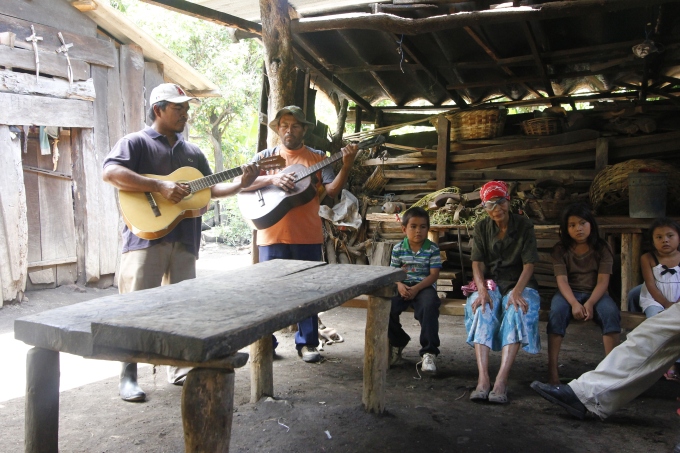
One of the indigenous communities we visit, the Aguirre family. They will teach us about their history, their organic integrated farm, local flora and fauna and their medicinal plants.
The program includes:
Riding and hiking through stunning scenery, exploring a variety of natural eco systems including Pacific dry tropical forest, a live volcanic crater, lava flows, open grassland, a crater lake.
-
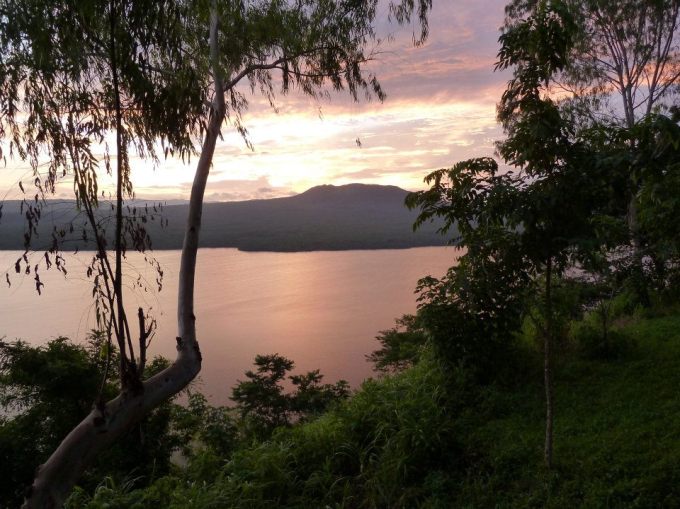
Laguna de Masaya (from the Masaya side)
Visiting a variety of local farms, looking at the impact humans have had on the various landscapes – especially through farming but also, more recently, tourist developments.
-
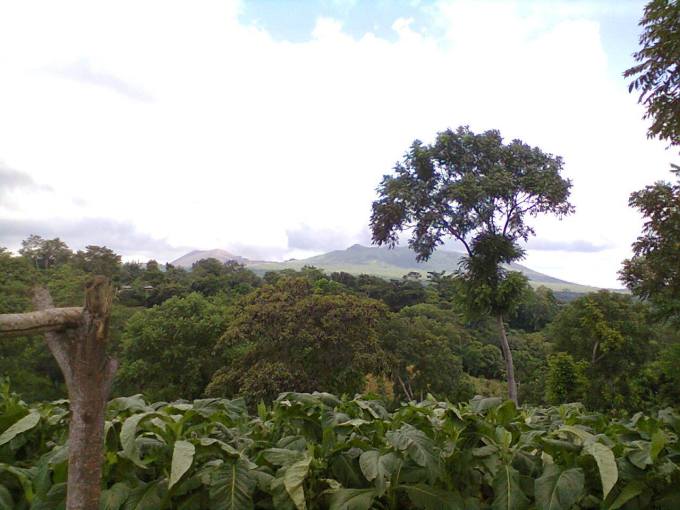
View of the Masaya Volcano from a tobacco farm. You will see the mixture of types of small scale agriculture, of which this is one example. We can see, in season, how different crops like tobacco and coffee are processed.Interacting with the communities around the rim of the Masaya Volcano, focusing especially on the indigenous, who have received the least input from national/local authorities and so have retained many indigenous customs.
Interacting with the communities around the rim of the Masaya Volcano, focusing especially on the indigenous, who have received the least input from national/local authorities and so have retained many indigenous customs.
-
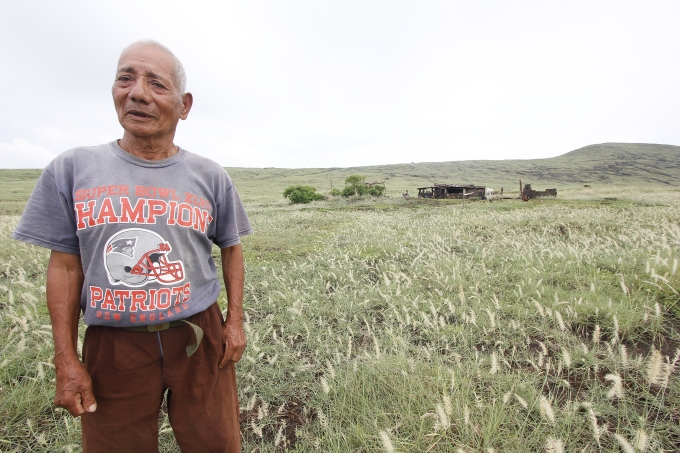
Meet Don Pablo who has lived here for 60 years, loves to tell his story and introduce us to his cows.
Learning about traditional food and cooking, music and dance, natural medicine, myths and legends, the history of the area…….
Helping to provide funds and volunteer help for developments requested by the communities themselves. The lack of official interest has also meant of course that the level of poverty and access to basic facilities such as drinking water and schooling has been severely restricted.
-

Mariposa volunteers laying water pipes with the Aguirre community
Staying with local families, with overnights in hammocks, offers a real way to understand the problems and joys of community life as well as ensuring that resources go directly to local families.
Trying to keep our tourist footprint as light as possible. Transport is mostly by foot or horseback. We use motor vehicles only when absolutely necessary!
-
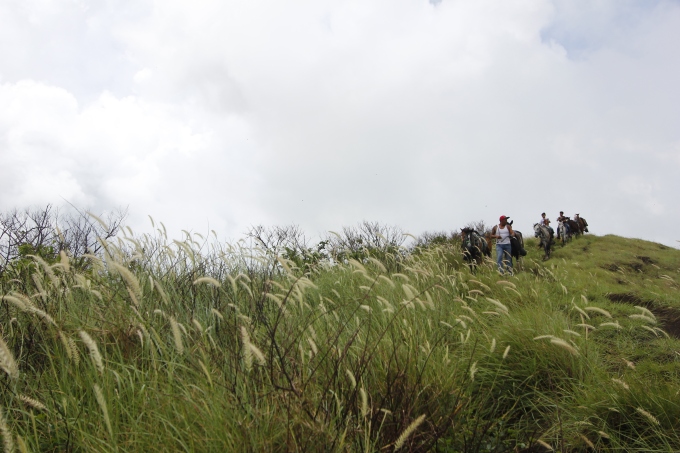
Trekking around the rim of the crater of the Masaya Volcano on horseback
Bird watching opportunities and the chance to observe night animals at our specially built observation hide.
-
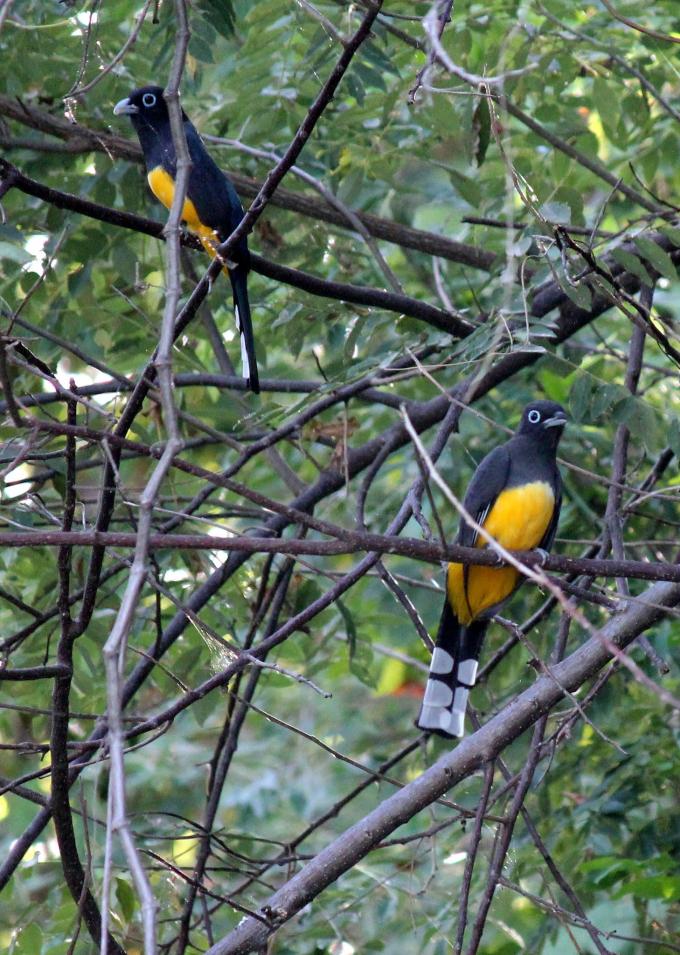
Black headed trogon…just one of the many species of birds living around the Masaya volcano
The program has been worked out with the communities who will benefit directly from the income. The communities also receive help in the form of construction, education, drinking water projects and more. A major Mariposa project involves donating eco cookers to reduce the reliance on firewood and reduce smoke emission, thus mitigating health risks associated with cooking on open fires. This project has been linked in with reforestation so when families accept a cooker from us they also take trees from our tree nursery to plant on their land.
-

Eco cookers donated by La Mariposa
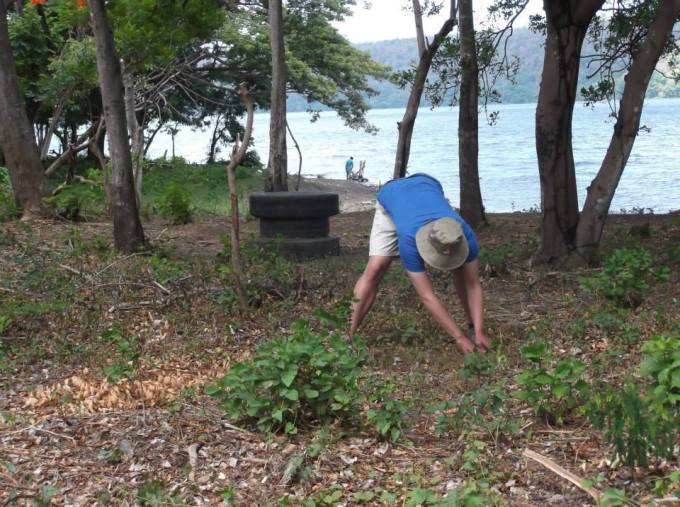
Reaforesting the shores of the Laguna de Masaya
This program is:
-
a 14-day program but you can opt to do one week, you can also combine with the Mariposa Spanish class/activity program the preceding week or the succeeding week.
-
The group needs a minimum of 3 people to function. Maximum 6.
-
Cost for one week per person is $450
-
- Thanks to Nick Saraceni, Marlon Reyes, Tim salt and Ann Tagawa for the photos



